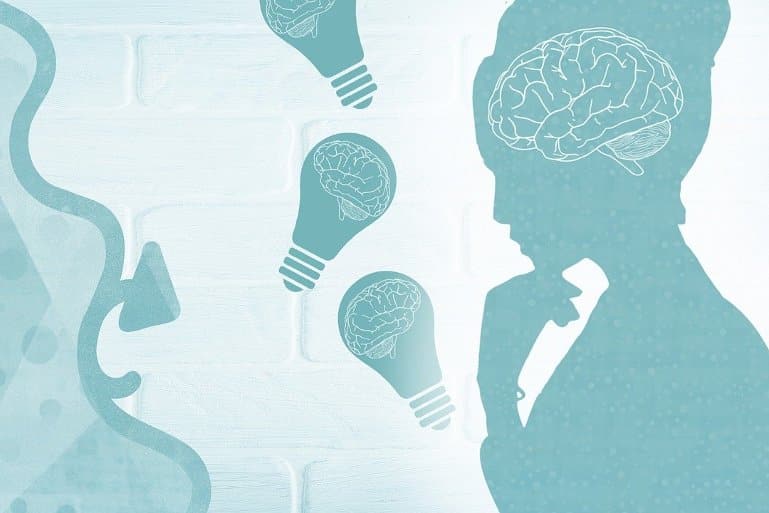Summary: Repetitive transcranial magnetic stimulation (rTMS) applied to the left prefrontal cortex can improve episodic memory performance by reducing the power of low frequency of brain waves during memory formation.
Source: PLOS
Memories of past events and experiences are what define us as who we are, and yet the ability to form these episodic memories declines with age, certain dementias, and brain injury.
However, a study publishing in the open access journal PLOS Biology on September 28th by Mircea van der Plas and Simon Hanslmayr from the University of Glasgow and colleagues, shows that low frequency repetitive transcranial magnetic stimulation—or rTMS—delivered over the left prefrontal cortex of the brain can improve memory performance by reducing the power of low frequency brain waves as memories form.
Based on current knowledge of the brain and the effects rTMS, the researchers hypothesized that they could improve episodic memory, and in the process, generate targets for future memory-related therapies.
The researchers first analyzed past data from 40 college students who had been asked to memorize lists of words. Half of the students received slow rTMS over the left dorsolateral prefrontal cortex while trying to memorize the words, and the other half received rTMS over a control region of the brain. In a new experiment, researchers collected data from 24 college students who each performed a similar memory task under both rTMS conditions.
Analysis of both datasets revealed that memory performance was better for words that were memorized while the left prefrontal cortex was being stimulated. Examining the EEG data that was recorded during the experiments, the researchers found that the slow rTMS applied to the prefrontal region led to reduced power of low-frequency (beta) waves in the parietal region of the brain, which is known to be involved in attention and perception.

Because slow rTMS inhibits brain activity, and the prefrontal cortex inhibits the posterior regions of the brain, van der Plas and co-authors theorize that the slow rTMS disinhibited the activity of the parietal region, leading to enhanced encoding of the words being memorized, and thus improved memory.
van der Plas notes, “Our electrophysiological results suggest that frontal stimulation affects a wider network and improves memory formation by inhibiting parietal areas. These are complex but interesting effects that require further experiments to better understand their neural basis.”
Hanslmayr adds, “We were quite surprised when we saw these effects in the first study, which was designed to investigate a different question. Therefore, we needed to replicate the effects in a second experiment to see whether this is real, and indeed it seems to be.”
Funding: S.H. was supported by grants from the European Research Council (Nr. 647954), and the Economic and Social Research Council (ES/R010072/1). The funders had no role in study design, data collection and analysis, decision to publish, or preparation of the manuscript.
About this rTMS and memory research news
Author: Claire Turner
Source: PLOS
Contact: Claire Turner – PLOS
Image: The image is in the public domain
Original Research: Open access.
“Stimulation of the left dorsolateral prefrontal cortex with slow rTMS enhances verbal memory formation” by van der Plas M, Braun V, Stauch BJ, Hanslmayr S. PLOS Biology
Abstract
Stimulation of the left dorsolateral prefrontal cortex with slow rTMS enhances verbal memory formation
Encoding of episodic memories relies on stimulus-specific information processing and involves the left prefrontal cortex. We here present an incidental finding from a simultaneous EEG-TMS experiment as well as a replication of this unexpected effect.
Our results reveal that stimulating the left dorsolateral prefrontal cortex (DLPFC) with slow repetitive transcranial magnetic stimulation (rTMS) leads to enhanced word memory performance.
A total of 40 healthy human participants engaged in a list learning paradigm. Half of the participants (N = 20) received 1 Hz rTMS to the left DLPFC, while the other half (N = 20) received 1 Hz rTMS to the vertex and served as a control group. Participants receiving left DLPFC stimulation demonstrated enhanced memory performance compared to the control group.
This effect was replicated in a within-subjects experiment where 24 participants received 1 Hz rTMS to the left DLPFC and vertex. In this second experiment, DLPFC stimulation also induced better memory performance compared to vertex stimulation. In addition to these behavioural effects, we found that 1 Hz rTMS to DLPFC induced stronger beta power modulation in posterior areas, a state that is known to be beneficial for memory encoding. Further analysis indicated that beta modulations did not have an oscillatory origin. Instead, the observed beta modulations were a result of a spectral tilt, suggesting inhibition of these parietal regions.
These results show that applying 1 Hz rTMS to DLPFC, an area involved in episodic memory formation, improves memory performance via modulating neural activity in parietal regions.






